Background
The year 2022 has been challenging for the Central Asian region. In addition to the widespread anti-government protests resulting from the tumultuous internal socio-economic and political environment, the external impact of the Ukrainian Crisis has widened the fissures already existing. On the one hand, these demonstrations have highlighted the vulnerabilities of the domestic situation in these nations. Still, on the positive side, they have forced the respective governments to take notice of the public discontent and to introduce some tangible measures to address significant issues and grievances.
Since Moscow began its military operations in Ukraine in February 2022, speculations of Moscow’s waning power in Central Asia have circulated, mostly due to these nations’ attempts to strike a balance in their positions on the conflict. This cannot be accurate, though, given Moscow is not only the region’s biggest economic partner, but also these nations have a long history of friendship with Russia. China is becoming more prominent in the region and goes beyond just trade and economics. Along with China, other external actors such as Turkey, India, and Pakistan have been making concerted attempts to strengthen their ties with the Central Asian region. Against this context, the following are some notable developments that occurred in Central Asia in 2022 and had an influence both internally and externally. Some forecasts for the following year will be made based on the current trends.
Protests in Kazakhstan
Central Asia witnessed internal turbulence at the very beginning of the year. Wide-scale protests started on January 2 in the western town of Zhanaozen in Kazakhstan and were then spread across the country. These protests appear to have been sparked by the increase in gas prices. While the immediate cause of the protests was the increase in fuel prices, they also highlighted widespread grievances about structural problems, including corruption, socio-economic disparity, and desires for regime change. The arrival of CSTO forces put down the demonstrations. In response to the protests, on March 16, President Tokayev made sweeping political reforms proposals that would have required amending one-third of the nation’s Constitution.
These amendments were put to the vote in a national referendum, which was held on June 5. More than 70 percent of people voted in favour of the amendments and the reforms. Key reforms include the redistribution of powers from the President to parliament, restriction on the presidential term, the establishment of the Constitutional Court from January next year, simplified procedures for registering political parties, increased participation of citizens in the governance of the state, as well as further protection of human rights.[1] To validate these changes, snap elections were announced in November 2022, which were won by a majority by President Tokayev. Peaceful elections, Women’s participation, Opposition role, and none of the above (NOTA) options are some important components of snap elections.
Protests in Karakalpakstan (Uzbekistan)
In June of this year, Uzbekistan’s President Shavkat Mirziyoyev proposed constitutional reforms that, among other things, removed the right of Karakalpaks to secede. The term “sovereign” was also omitted from the proposed description of Karakalpakstan. Protests erupted in Karakalpakstan, resulting in 18 deaths and 250 injuries.[2] The emergency declared in the province was requested to be lifted by the Karakalpak assembly on July 20. On July 21, the curfew and state of emergency were eventually removed. President Mirziyoyev also stated that the status change for Karakalpakstan would be reversed.
Compared to other regions of Uzbekistan, Karakalpakstan, the western most area, has more significant issues. At 16.4 percent, the region has the highest percentage of poverty in the nation. About 20 percent of Karakalpakstan’s citizens depend on the income of relatives who have left the country to work in Kazakhstan or Russia. Water access is yet another serious issue. Either no one has water, or the water is of low quality. Only 60 percent of people have access to clean drinking water at home. Karakalpakstanis were thus unhappy for various reasons, and the change in their sovereign status exacerbated their displeasure leading to these protests.
Russia-Ukraine conflict- Consequences and Responses from Central Asia
Several million Central Asian labour migrants from Kyrgyzstan, Tajikistan, and Uzbekistan work in Russia. The remittances account for 31, 27, and 12 percent of their gross domestic product. A sharp rouble depreciation after the Russian military operations in Ukraine had hit Central Asia hard.[3] The World Bank predicted the value of remittances from Russia would fall 21 percent in Uzbekistan, 22 percent in Tajikistan, and 33 percent in Kyrgyzstan.
Even being called Russia’s sphere of influence, Central Asian countries adopted a balancing position concerning this conflict. In UN resolutions on this conflict, Central Asian countries have abstained or were absent.[4] However, on the resolution to remove Russia from the UN Human rights council, they voted in favour of Russia. UN Resolution ES 11/4 declared that Russia’s so-called referendums in the Donetsk, Kherson, Luhansk, and Zaporizhzhia oblasts and the subsequently attempted annexation are invalid and illegal under international law. These countries had abstained. Simultaneously, it has also been visible that Central Asian countries are trying to diversify not only their economic relations but political relations with the West post this conflict.
Kyrgyz- Tajik Border Clash
At a disputed border section, border guards from Kyrgyzstan and Tajikistan exchanged fire on September 14. At least 94 people were dead, with over 100 wounded. Around 137,000 people have been relocated from the disputed border area. According to government data, the border between Kyrgyzstan and Tajikistan spans more than 970 kilometres, yet only 504 kilometres have been demarcated. There have been over 150 documented tension and conflicts between them, with significant losses due to the abovementioned factors.
A few things must be considered when evaluating the causes of an unresolved border dispute between these two countries. Tajik nationalism may also be used to analyse the boundary dispute between Tajikistan and Kyrgyzstan. Tajik President Emomali Rahmon is Central Asia’s only Soviet-era leader whose influence is concentrated on supporting Tajik nationalism. Tajikistan’s territorial integrity may be jeopardised if border issues are resolved.[5]
Similarly, while Kyrgyzstan has advocated settling the issue via negotiation and discussion and according to international rules, Bishkek continues to focus on strengthening its military capabilities. This creates uneasiness and anxiety, which leads to conflicts. The crisis has ramifications for Central Asian regional security as well. Fundamentalist organisations may seek to grow their regional influence by exploiting any delicate scenario.[6]
Fourth Consultative Meeting of Central Asian Leaders
Began in 2018, the fourth meeting of this format was held on July 21, 2022, at Cholpan Ata, Kyrgyzstan. The meeting was attended by the five heads of state of Central Asian nations. Domestic issues and consequences of the Ukrainian crisis- Finding common ground on addressing these challenges was one of the key issues discussed during the fourth Consultative Meeting. Uzbek President pushed for increased trade and transportation cooperation.
Along with this, Central Asian nations should work together to ensure Afghanistan’s economic recovery because Afghanistan’s instability has an impact on the entire region of Central Asia. Recent unrest in the Central Asian region has shown the existence of outside forces who wish to destabilise the region. As a result, President Mirziyoyev stressed the importance of frequent talks between the leaders of the security councils and special services of the Central Asian nations in all these sectors. Tajik and Kyrgyz Presidents expressed concerns about Afghanistan. Kyrgyz President has also underscored the significance of removing the tariff and non-tariff barriers while emphasizing free trade, investment, and digitization. Additionally, he highlighted that border checkpoints with Kazakhstan should not hinder bilateral trade but rather help it to expand.[7]
‘The Treaty of Friendship, Good-Neighborliness, and Cooperation for Development of Central Asia in the Twenty-First Century’ was proposed by Kazakh President Tokayev. Uzbek President Shawkat Mirziyoyev and Kyrgyz President Sadyr Zaparov signed it. Turkmen and Tajik presidents did not sign this treaty citing the excuse of domestic procedures. Nur Sultan also expressed its willingness to contribute to the construction of the Mazar-e-Sharif - Kabul - Peshawar railway pushed by Uzbekistan. However, this project still has a lot of problems, including funding and security issues.[8]
Samarkand Summit of SCO
The Samarkand declaration emphasized “commitment to peaceful settlement of conflicts and disputes between countries via dialogue and consultation.” They emphasise that the foundation for the long-term growth of international relations is the mutual respect for each other’s independence, territorial integrity, and sovereignty. Also, equality, mutual interest, non-interference in one another’s domestic affairs, and refrain from using or threatening to use force also positively contribute to the friendly relations between the states. The member nations agreed to develop common ideas and procedures to create a consolidated list of terrorists, separatist and extremist organisations whose activities are illegal on SCO member states’ borders.
India urged Shanghai Cooperation Organisation member states to give each other full right to transit, as it would enhance connectivity and help establish reliable and resilient supply chains in the region. India highlighted the initiative to promote millet to solve concerns linked to food security when the world is experiencing an unparalleled energy and food crisis. In this context, New Delhi is attempting to popularise millets. The SCO can potentially promote it by announcing 2023 as the International Year of Millets.
The member states underscored the importance of a decision on launching a procedure to admit the Republic of Belarus as an SCO member. The member states also made the decision on granting the status of SCO dialogue partners to the Kingdom of Bahrain, the Republic of Maldives, the State of Kuwait, the United Arab Emirates, and the Republic of the Union of Myanmar. They signed the memorandums on granting the status of SCO dialogue partners with the Arab Republic of Egypt, the Kingdom of Saudi Arabia, and the State of Qatar.[9]
Revitalization of China-Kyrgyzstan-Uzbekistan Railway
The China-Kyrgyzstan-Uzbekistan railway, an ambitious Chinese project conceived in the mid-1990s, has been on hold for over two decades. The main reasons for the project’s delay were tense Uzbek-Kyrgyz relations, Kyrgyz apprehension regarding China, and the intended route (the Kyrgyz sector), which proved difficult to build a railway line. However, there is a renewed desire among the parties involved in this railway line to revive this project due to the Ukrainian Crisis and the disruption of supply chains flowing through Russia. The three stakeholders signed a cooperation agreement on the sidelines of the Samarkand SCO Summit. However, there are still many issues that need to be taken care of before the initiation of construction on this project.[10]
The firsts in Central Asia
China-Central Asia Summit-
On the occasion of the 30th anniversary of diplomatic ties, China’s President Xi Jinping hosted a virtual summit of the ‘China Plus Central Asia’ grouping on January 25. The discussion centred on the situation in Afghanistan, Central Asia’s domestic security, China’s Vaccine diplomacy in the region, and China-Central Asia trade. Additionally, the Chinese President announced that Bejing will import more high-quality commodities and agricultural products from the Central Asian region, continue to host the China-Central Asia Economic and Trade Cooperation Forum and work to raise bilateral trade to USD 70 billion by 2030. He also offered to open an enormous market in China to Central Asian exporters. China suggested that a discussion forum must be created on e-commerce cooperation.[11]
Xi concluded his speech by announcing a USD 500 million aid grant for Central Asia. He also urged close partnership to address risks and challenges and promote the UN’s 2030 Sustainable Development Agenda. The Chinese government will offer 5,000 seminar and workshop opportunities and grant Central Asian nations USD 500 million over the next three years to support livelihood programmes and train professionals in the fields of poverty reduction, health, agricultural development, connectivity, information technology, and other areas, strengthening the force for self-generated development.[12]
India-Central Asia Summit
The inaugural India-Central Asia Summit took place virtually on January 27, 2022, between the leaders of India and Central Asia. This summit is noteworthy for two reasons: first, in 2022, India and Central Asia celebrated thirty years of diplomatic ties, and second, the rapidly changing geopolitical environment in South and Central Asia. After the summit was over, the “Delhi Declaration” was issued. The following analysis looks at some of this document’s key points.[13]
India suggested creating the India-Central Asia Centre in New Delhi, which will serve as the summit’s secretariat. This center also might serve as a nodal point for multilateral engagement to review and analyse the challenges and potential of India-Central Asia relations. To improve the relationship between the parliaments of India and Central Asian nations, all of the leaders affirmed their willingness to establish an India-Central Asia Parliamentary Forum.
To advance cooperation in this sector, all the leaders concurred that the cultural ministers should meet frequently. India intended to commission a “Dictionary of Common Words used in India and CARs” in order to commemorate the linguistic commonalities between Indian and CARs. Furthermore, holding a Buddhist exhibition in the Central Asian Republics will highlight the profound Buddhist ties that existed between the two regions.[14]
As proposed, creating a Joint Working Group (JWG) on Afghanistan will provide the joint efforts of India and the CARs to stabilise Afghanistan with a common framework. The CARs also favour including the Chabahar port in the INSTC. The inclusion of the Turkmenbashi port in the INSTC framework was another proposal by Turkmenistan, which will help the connectivity projects gain momentum. A Joint Working Group on Chabahar Port has been suggested to assist in identifying and resolving the problems with trade and economic cooperation between India and CARs. In order to improve and promote the prospects in this field, it was also suggested to establish an “India-Central Asia Investment Club” under the guidance of the India Central Asia Business Council (ICABC). [15]
Russia-Central Asia Summit
Against this backdrop, Russian President Putin attended the first-ever Leaders’ Summit with Central Asian counterparts on October 14, 2022, in Astana. The summit’s agenda revolved around adopting measures to safeguard joint trade and economic interests in the present geopolitical climate and regional security challenges. All the leaders presented their views on the regional situation and their relations with Moscow. Following the summit, a joint statement was issued. A few ideas the Russian President flagged to strengthen its relations with the region are reconfiguring financial systems, a unified energy system, revitalizing transport corridors such as INSTC, and regional security issues about Afghanistan.[16]
The President of Tajikistan requested greater attention and financing from Russia. After the Tajik President’s video criticising Russia went viral, many people expressed concerns about Russia’s declining influence. It should be understood that countries in Central Asia have a close association with Russia in which they are free to voice their dissatisfaction. This might also be seen as an opportunity for Russia to focus on strengthening its connections with the area.[17]
Central Asia- EU summit
The first summit between the EU and Central Asia was held in Astana on October 27. The heads of Kazakhstan, Kyrgyzstan, Tajikistan, and Uzbekistan participated in this summit together with Charles Michel, President of the European Council. Hojamurat Geldymuradov, Deputy Chairman of Turkmen Cabinet of Ministers in charge of economic and financial issues, represented Turkmenistan. A joint statement was issued after the meeting highlighting the common areas of cooperation between the EU and Central Asia.[18]
The efforts of Central Asian leaders to improve regional connectivity and coordination, as outlined in the Joint Statements of the Consultative Meetings of Central Asian Heads of State, were acknowledged by the President of the European Council. The Leaders emphasised that fostering an attractive business climate will support continued regional trade, connectivity, and investment growth. The new EU-Central Asia Economic Forum platform was warmly welcomed in this context. [19]
The leaders expressed their concern for the situation in Afghanistan and agreed that more involvement was needed to help the Afghan people. They also emphasised the significance of promoting and protecting human rights and basic freedom for the Afghan population, including those of women, girls, and minorities, as well as the formation of an inclusive and responsible government.
Projections for 2023
The geopolitical environment of Central Asia is quickly changing. The domestic situation in Kazakhstan, Uzbekistan, and Tajikistan has been tumultuous. While Uzbekistan and Kazakhstan have made significant efforts to implement socio-economic and political reforms to safeguard human rights, a responsible government, the abolition of corruption and poverty, and so on, the situation in Tajikistan will be critical for two reasons. Tajikistan’s economy relies heavily on remittances. Therefore, a crisis such as a coronavirus pandemic or the Russia-Ukraine conflict is likely to exacerbate local unrest in the Pamir area, which has already given rise to strained relations between the government and the local population. Second, there is a potential for a power change in the country in the upcoming elections in 2025. Thus, President Rahmon is likely to use an iron fist to crush any opposition to ensure a peaceful power transition. As a result, it is critical to keep a close watch on the domestic security situation in Central Asia, particularly in Tajikistan.
It will be important to assess how successfully Central Asian economies can adapt to changing conditions. To reduce their dependency on Russia, these nations will continue to try to diversify their logistical and transit networks. The relationship with the West is likely to improve. Russia-Central Asian ties will also have to pass the litmus test if Moscow’s Ukraine agenda is expanded further. Though China’s debts are alarming for these nations, Beijing’s influence in the region is growing, and it is not only economic. China is now trying to increase its defence and military cooperation with these countries.
Turkey is also becoming more and more influential. Along with emphasizing its cultural and ethnic links with the region, Ankara will boost its military sector cooperation with Central Asian nations. Russia will work to strengthen its influence in the area by interacting with regional leaders more often. Positive developments will also emerge in India-Central Asia relations. India will prioritize improving connectivity with the region since it is the biggest impediment to bilateral trade and economic relations. This year, New Delhi will also host the SCO, which will be used to strengthen India-Central Asia’s multidimensional relations.
Endnotes :
[1]Aibarshyn Akhmetkali, and Zhanna Shayakhmetova, “Kazakh Officials Brief Foreign Media Representatives on Recent Political Reforms Ahead of Presidential Election” Astana Times, 18 November 2022. https://astanatimes.com/2022/11/kazakh-officials-brief-foreign-media-representatives-on-recent-political-reforms-ahead-of-presidential-election/
[2] “Uzbekistan Says 18 Killed In Karakalpakstan Unrest”, RFE/RL, 4 July 2022.https://www.rferl.org/a/uzbek-president-fatalities-karakalpakstan-protests/31926986.html
[3]Yunis Sharifli, Chia-Lin Kao, and Bermet Derbishova, “Russia’s War in Ukraine and Its Impact on Central Asia” The Diplomat, October 24, 2022. https://thediplomat.com/2022/10/russias-war-in-ukraine-and-its-impact-on-central-asia/
[4]Shannon Tiezzi, ”How Did Asian Countries Vote on the UN’s Ukraine Resolution? The Diplomat, March 03, 2022. https://thediplomat.com/2022/03/how-did-asian-countries-vote-on-the-uns-ukraine-resolution/
[5]Dr Pravesh Kumar Gupta,“Kyrgyzstan-Tajikistan Border Clash: An Analysis”, VIF Article, September 23 , 2022. https://www.vifindia.org/2022/september/23/kyrgyzstan-tajikistan-border-clash-an-analysis
[6]Ibid.
[7]Dr Pravesh Kumar Gupta, “The Regional Integration in Central Asia”, VIF Article, August 5 , 2022. https://www.vifindia.org/article/2022/august/05/the-regional-integration-in-central-asia
[8]Ibid.
[9]Samarkand Declaration of the Heads of States of the SCO, http://eng.sectsco.org/load/914622/
[10] Catherine Putz,“China, Kyrgyzstan, Uzbekistan Move Railway Plans Forward With Agreement at SCO”The Diplomat, September 26, 2022. https://thediplomat.com/2022/09/china-kyrgyzstan-uzbekistan-move-railway-plans-forward-with-agreement-at-sco/
[11]Chris Devonshire-Ellis,“China Plus Central Asia’ Meeting Draws Eurasian Security And Trade Closer Together”, Silk Road Briefing, January 26, 2022.
https://www.silkroadbriefing.com/news/2022/01/26/china-plus-central-asia-meeting-draws-eurasian-security-and-trade-closer-together/
[12]Ibid.
[13] “Delhi Declaration of the 1stIndia-Central Asia Summit”, January 27, 2022.
https://eoi.gov.in/tashkent/?pdf13991?000#:~:text=of%20Uzbekistan%20H.E.-,Mr.,India%20and%20Central%20Asian%20countries.
[14]Ibid.
[15]Ibid.
[16]Dr Pravesh Kumar Gupta, “First Russia-Central Asia Summit: A Reflection of Deep Connect between the Two Regions”, VIF Article, October 25 , 2022.https://www.vifindia.org/2022/october/25/First-Russia-Central-Asia-Summit-A-Reflection-of-Deep-Connect-between-the-Two-Regions
[17]Ibid.
[18]“Astana hosted the First EU-Central Asia Summit”, News Central Asia, October 28, 2022. https://www.newscentralasia.net/2022/10/28/astana-hosted-the-first-eu-central-asia-summit/
[19]Ibid.
(The paper is the author’s individual scholastic articulation. The author certifies that the article/paper is original in content, unpublished and it has not been submitted for publication/web upload elsewhere, and that the facts and figures quoted are duly referenced, as needed, and are believed to be correct). (The paper does not necessarily represent the organisational stance... More >>
Image Source: https://www.azernews.az/media/2022/07/27/jphs.jpg

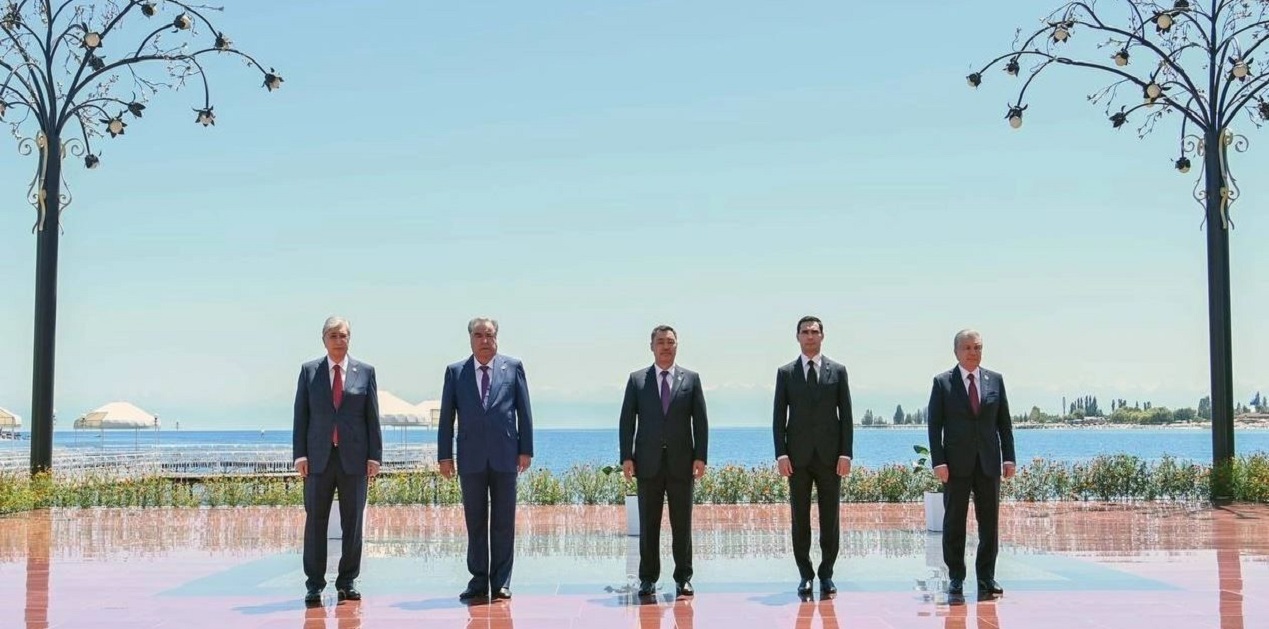

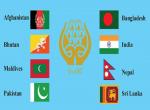

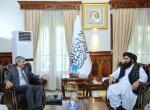
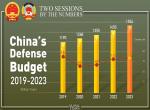
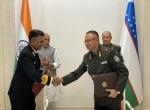
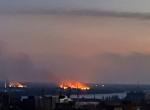
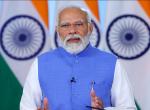
Post new comment